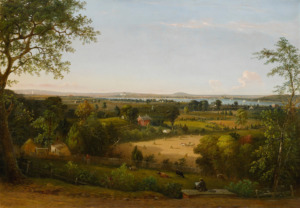
View of the City of Washington from the Virginia shore
On May 26, 1856, the Washington Evening Star reported that local artist William MacLeod (1811-1892) had successfully painted one of the vicinity’s most imposing scenes, “showing the metropolis as a prominent feature.” Today, MacLeod’s iconic image, View of the City of Washington from the Virginia Shore, hangs at the White House.
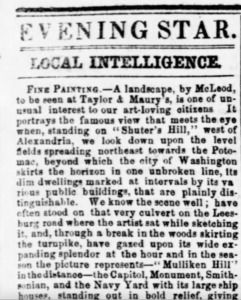
Headlined as a fine painting, the Star noted that William MacLeod had captured a well-known view from “Shuter’s Hill” located west of the city of Alexandria. The landscape shows the capital city before the Civil War. Even though the paper stated the painting was not “fancy,” it did appreciate the fine details the artist included. MacLeod’s artwork portrays a nice contrast between rural 19th-century Arlington, Virginia and the growing capital. Across the Potomac, one can make out the U.S. Capitol, the Navy Yard, the Smithsonian Castle, the Washington Monument, the Treasury Building, and the White House. MacLeod also added a figure of an artist who sits in the foreground, painting the cityscape in view. Many believe it is a self-depiction.
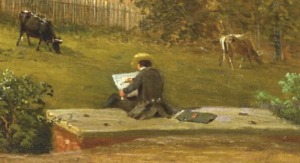
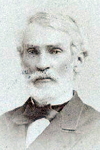
William MacLeod
William MacLeod was born in Alexandria, Virginia in 1811 to Scottish parents. He developed a strong connection with the city of Washington at a young age, witnessing the burning of the city by the British in 1814. After finishing his schooling, MacLeod attended medical training at the University of Glasgow in Scotland. It was during this time that he started visiting museums and art galleries and learned to paint.
After returning to America in the late 1830s, MacLeod traveled and painted in various places such as New York, New Hampshire, West Virginia, Pennsylvania, and Virginia. By 1843, he had established himself as a professional landscape painter in Alexandria and Washington. Around 1848, he moved to New York, where he furthered his skills with the Hudson River School. MacLeod showcased his oil paintings, which included views of the Delaware and Hudson Rivers, Washington, D.C., New Jersey, New England, and the Scottish Highlands, at the American Art-Union.
In 1854, he became a painting instructor in Washington, D.C. and opened his own art school and studio at 12th and F streets. During the Civil War, he worked as a clerk for the U.S. Treasury, a position he held until 1873, when he became the first curator of the Corcoran Gallery of Art. A key figure in the art life of Washington, D.C. during the second half of the nineteenth century, William MacLeod was active as both an artist and curator. In his role as the capital’s first landscape painter, MacLeod’s panoramic views of local and regional scenery, helped introduce the realism of the Hudson River School to Washington, D.C.’s art audiences.
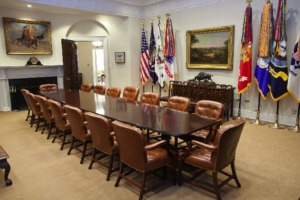
Roosevelt Room at the White House
His painting of the mid-nineteenth century Washington, D.C. landscape became part of the White House Collection in 1971, during the administration of President Richard Nixon. Most recently, the painting has been on display in the West Wing’s Roosevelt Room, a popular location for presidential meetings and televised conferences.
Special thanks to “Thehillishome.com” and the White House Historical Association for their contribution to this story.


